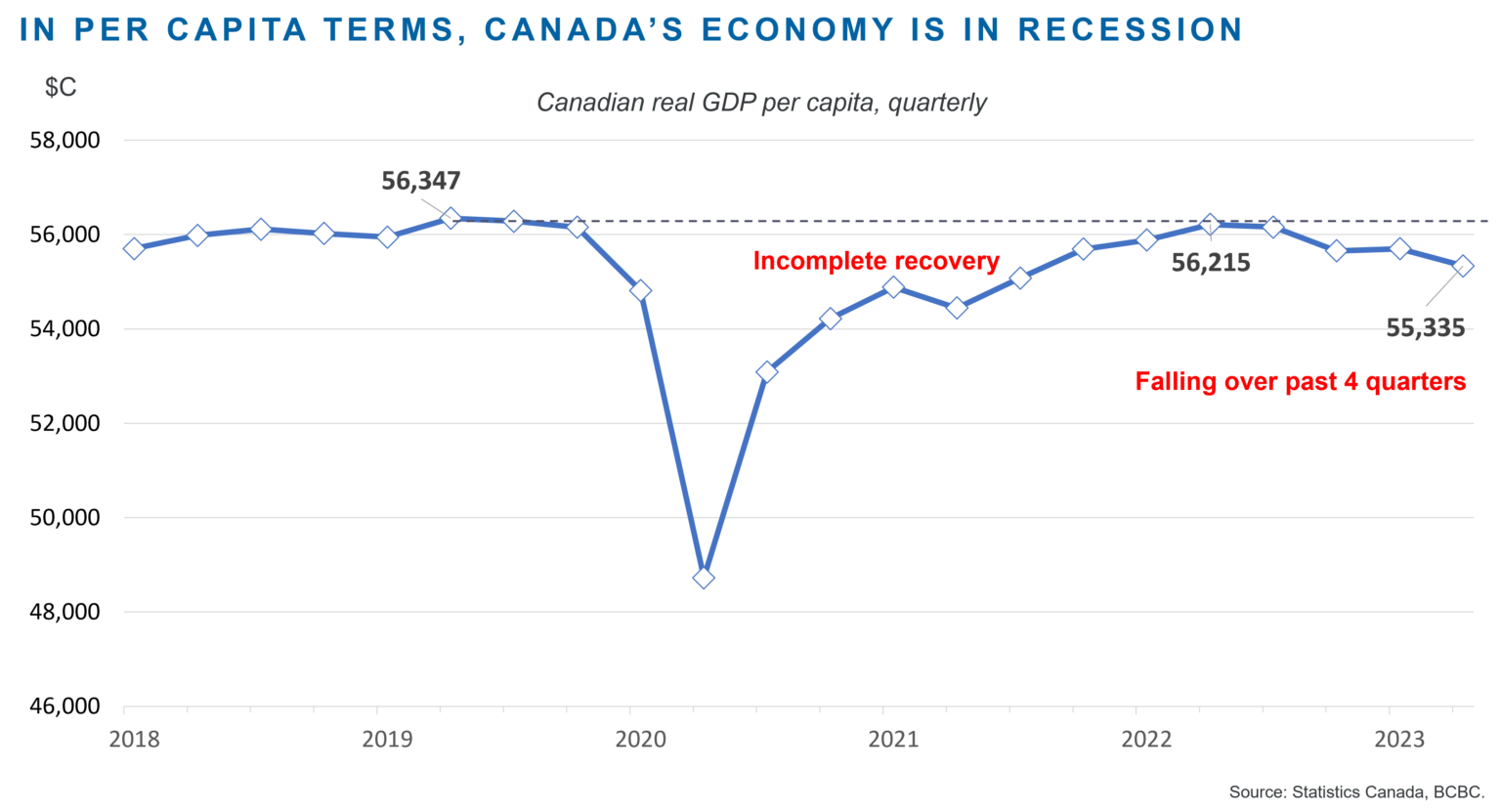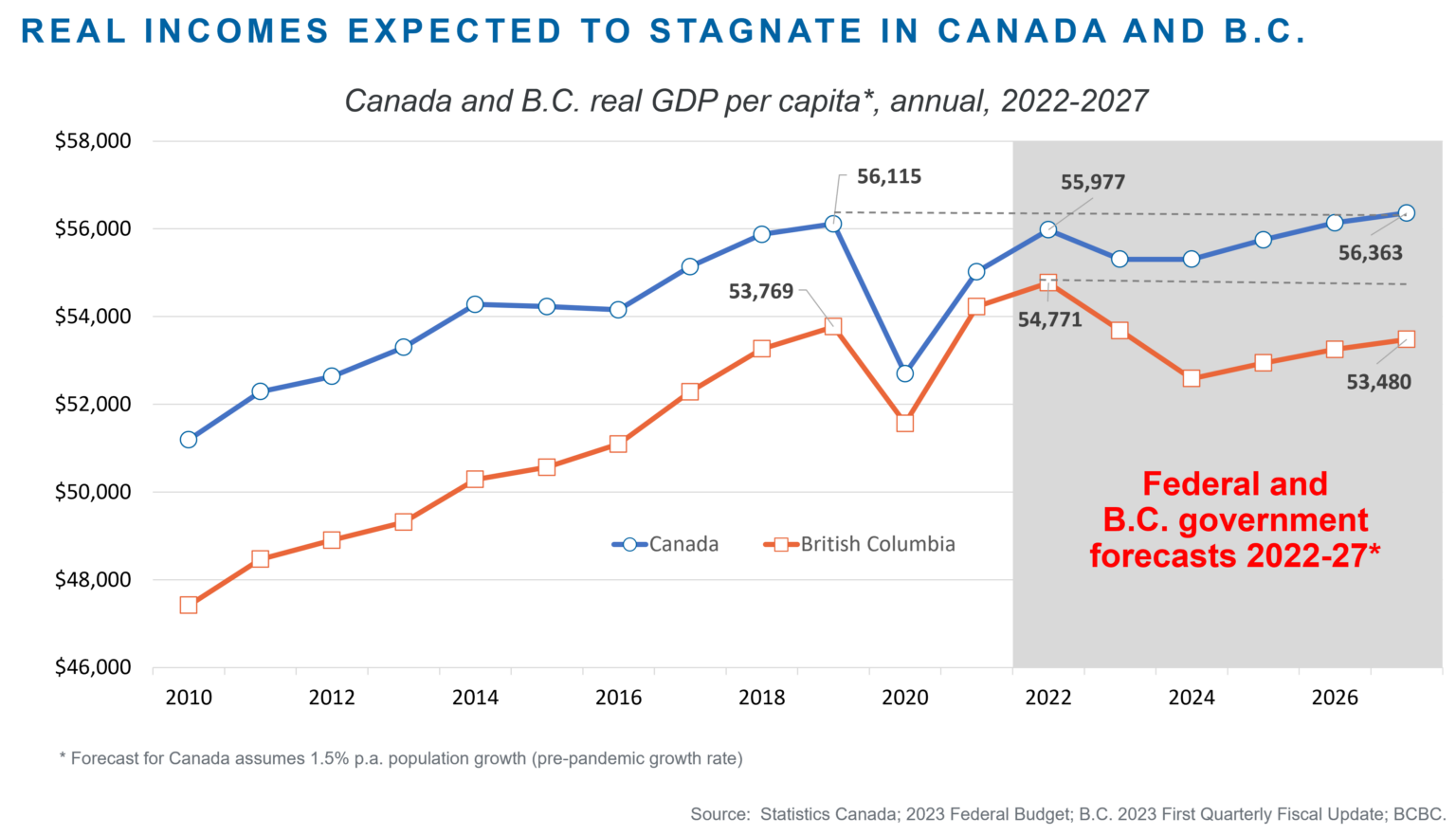Federal and B.C. governments forecast an 8-year retreat in living standards
If it feels like living standards are slipping, it’s because they are. Looking through the veneer of population growth, well-being in the Canadian and B.C. economies is sinking and many people are doing it tough. Whether it’s how far our paycheque stretches after inflation, buying groceries, feeling buried by the dizzying array of taxes we pay, or paying the rent or mortgage, the signs of retreat in living standards are all around us.
An Angus Reid Consumer Economic Pulse survey, conducted from 21-26 September and sampling 1503 adults across Canada, found:
“Perceptions of the Canadian economy are at their worst since tracking began, with two-thirds of Canadians describing the economy as being in poor shape. Almost half of Canadians feel the economy will be in a far worse situation six months from now, the highest levels seen so far in 2023.”
What does the economic data say?
Economic data confirm what people are feeling on the ground. Canada’s real GDP is now around $1,000 per person, or around $2,500 per household, below what it was prior to the pandemic.Figure 1 shows real GDP per person since 2018. GDP per person was $56,300 in 2019Q2. It plummeted by 14% to $48,700 during the pandemic and has since managed only a tepid and partial recovery. GDP per capita reached $56,200 in 2022Q2 at which point the recovery faltered. Real GDP per capita has fallen for the past four consecutive quartersand, at $55,300, is around 2% lower than it was in 2019.
Figure 1
Is the outlook any better?
In a word, no. Government forecasts do not expect a recovery in living standards in Canada or B.C. until at least 2027. Figure 2 shows annual real GDP per capita for Canada and B.C. over 2022-27. Forecasts for Canada are based on GDP growth forecasts from the 2023 Federal Budget less our (conservative) assumption for population growth of 1.5% per annum. Note, population growth last year was 3.0%, the highest since 1957-58 following the Hungarian Revolution and Suez Canal Crisis. If that scorching pace of population growth continues, our estimates for GDP per capita may be overstated. Forecasts for B.C.’s GDP per capita are from the government’s First Quarterly Report.
Canada is not expected to recover its 2019 level of real GDP per capita until at least 2027. Unlike Canada, B.C. is estimated to have recovered its pre-pandemic level of GDP per capita by 2022 (based on estimated 2022 GDP and actual population). However, B.C.’s real GDP per capita is expected to fall by 4.2% over 2023 and 2024, from an estimated $54,800 in 2022 to $52,500 in 2024.
This translates to an average real income loss for British Columbians of $2,200 per person, or $5,400 on a per household basis, over 2023 and 2024. A weak, partial recovery is projected to follow over 2025-27. By 2027, B.C.’s GDP per capita is expected to be $53,500 – which is still 0.5% or $300 per person below its pre-pandemic level in 2019.
Figure 2
Conclusion
The evidence is stacking up that our economy is simply not as productive or efficient as it should be. The economy is not generating the real per capita income needed to raise average living standards over time – let alone recover our pre-pandemic living standards.
Canadians and British Columbians face an eight-year recession in average real incomes according to official government forecasts. Policymakers in Ottawa and Victoria should be candid in their public communications that the outlook for living standards is bleak. The health of the economy should be at the top of their list of priorities.


